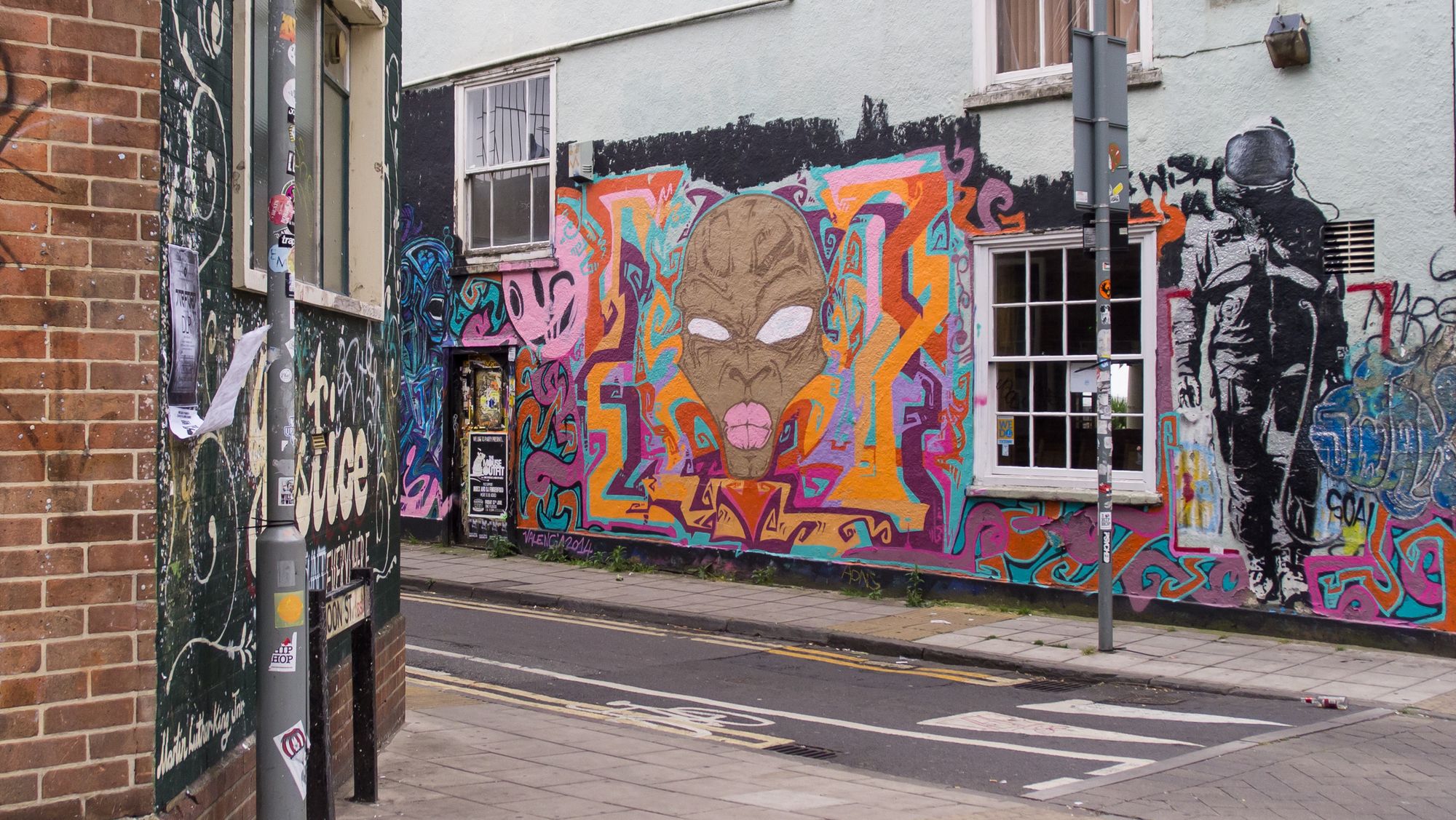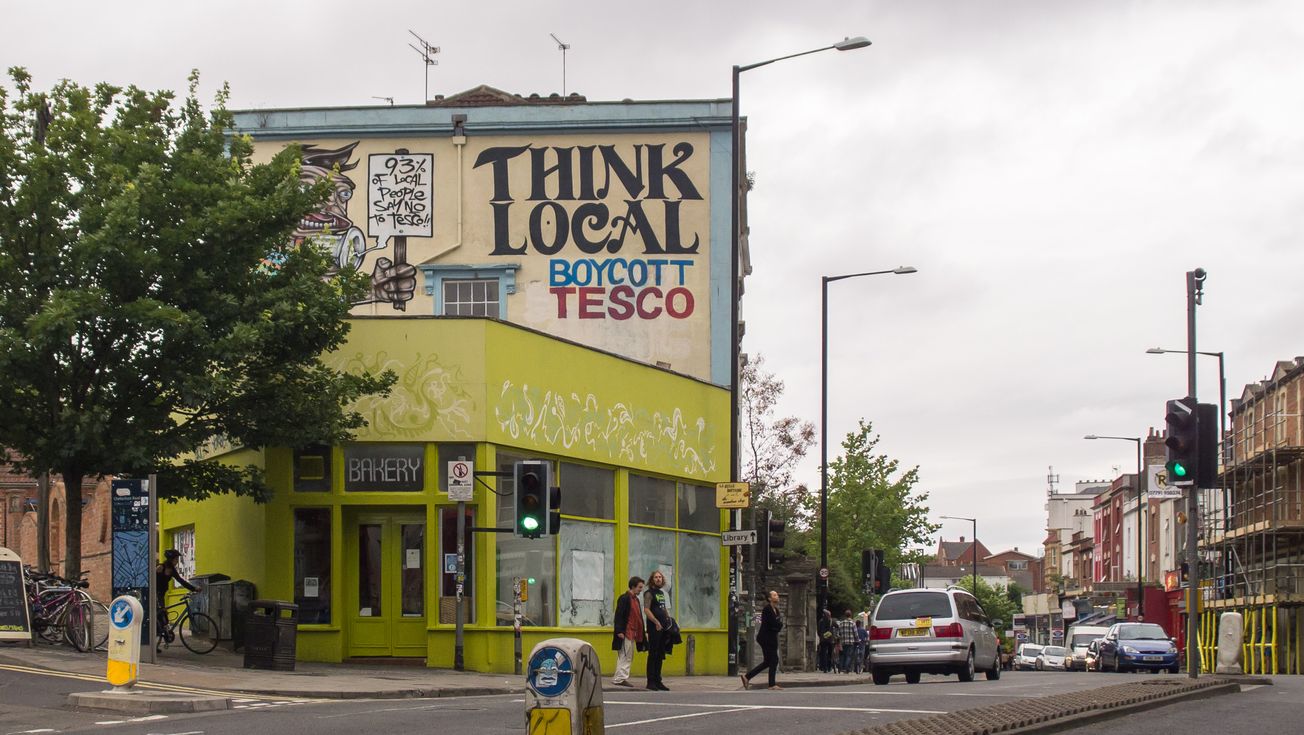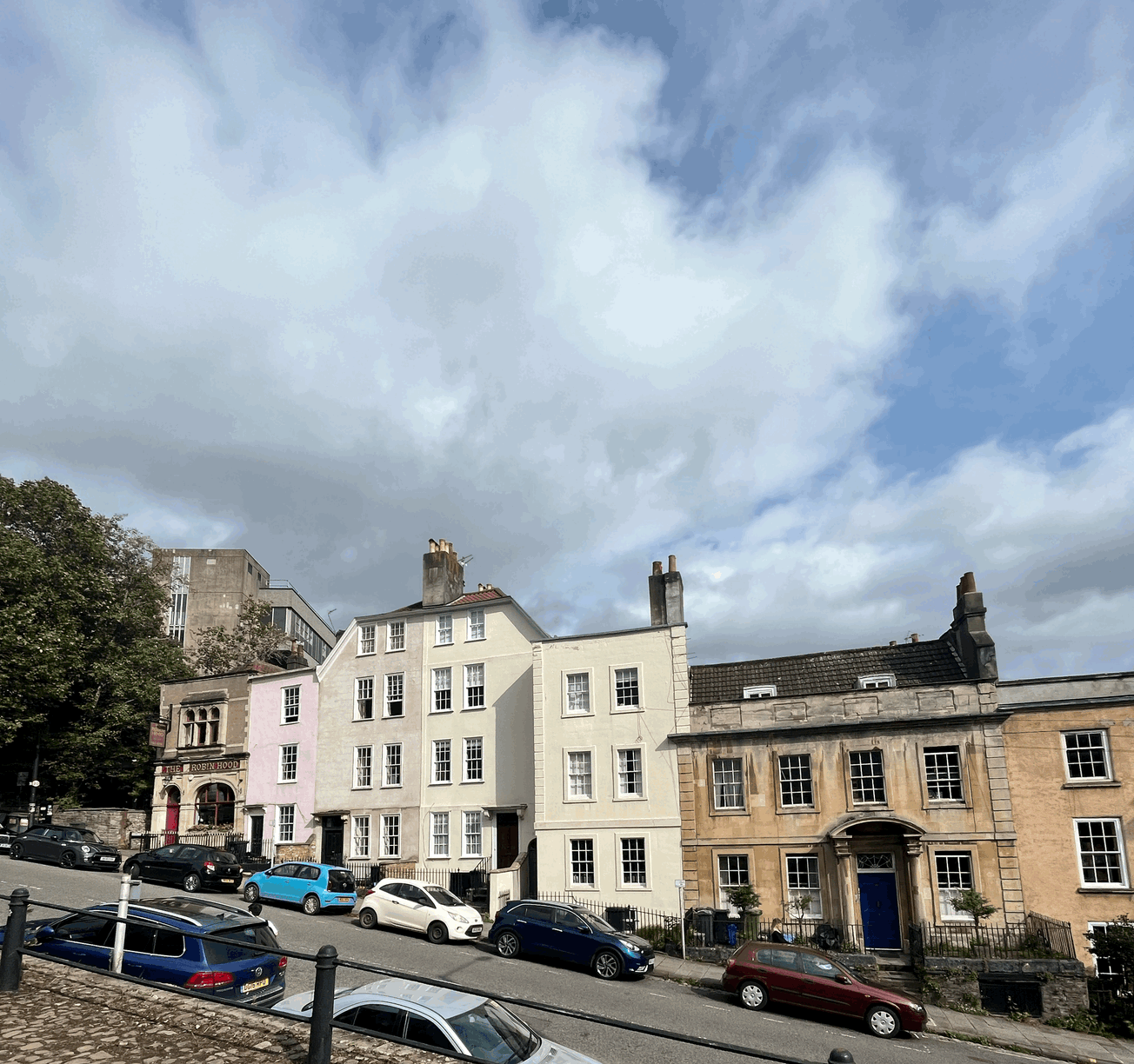By Charlie Graff, MPhil English
In its origins, when Stokes Croft was abandoned by developers, it became home to a wide range of working-class people, squatters and immigrants. In the '90s and '00s, a second wave of people moved in: artists, free-ravers, activists and independent businesses, giving the area the identity it’s famous for today.
Epigram sat down with Flo, who works with Treasure Stokes Croft, a boutique charity shop raising money for local regeneration projects, and community hub running various initiatives including a weekly womens’ group, to discuss the history of Stokes Croft and how gentrification may impact its future.
Flo moved to Stokes Croft at the tail-end of the '00s. She was there in 2011, when a protest against a new Tesco in the area turned into a riot after police raided the nearby Telepathic Heights squat. The riot brought national media attention to the area and national media attention brought another wave of gentrification: developers.

‘I remember that day, especially that one night. It was a really intense atmosphere. It was like a crescendo of people saying, “No, we do not want this here.” But now, it’s kind of accepted really.’
For a decade, the Council conceded to the protestors by limiting alcohol sales and opening times at the Tesco. Two years ago, the concession was quietly revoked. On hearing this, Flo seemed disappointed but not entirely surprised: ‘There used to be a lot more resistance in the area. Before, it felt a bit more gritty and real. And it has slowly become just a bit cleaner, nicer.’ Talking about the revoked limitations on Tesco, she said that ‘In the past, there would have been a big clash, but now it’s barely even noticed.’
Walking into Treasure Stokes Croft, you can see what Flo means. She explains that the boho-chic white walls and hardwood floors are a compromise. This is a sanitised, ‘London-ey’, student-friendly version of Treasure’s previous incarnation, which they were priced out of.
To keep business going, Treasure has had to share the modest space with a Depop outlet that benefits from the Stokes Croft brick and mortar and graffiti ‘aesthetic’ for its digital marketing photoshoots. In their half of the shop, you can find two or three racks of upcycled jackets priced at £85, and an empty community cork board.
‘You have to make sacrifices,’ says Flo. We’ve made the sacrifice of sharing our space, and branching out to places like cafes.’ Discussing whether cafes are part of the problem, she considers that they bring a certain ‘vibe’, and can create a space which is further from Stokes Croft’s ‘original ideals.’
Flo, who wrote her dissertation on gentrification in Stokes Croft when she was a University of Bristol student, is aware that initiatives like Treasure Stokes Croft play a role in the cycle of gentrification, despite its good intentions and community-oriented goals. ‘It always goes in loops,’ she says.
To an extent, this reflects comments made by Bristol mayor Marvin Rees last year: ‘The first people that raise their voice on gentrifiers are actually the first wave of gentrifiers. The people that get gentrified first are the voiceless people, and then people move in and then they run campaigns on gentrification when the next wave of people comes in and impacts on them.’
Given the cyclicality of gentrification, Rees may be quite right to suggest that the question of ‘How can we stop gentrification?’ is better posed in terms of ‘Who should we stop gentrification for?’.
In the case of Stokes Croft, where most independent businesses have already had to make a deal with developers or other organisations hoping to take over their space, one answer could be the community in St. Pauls.

House prices in Ashley ward have doubled over the last decade, in an area where 61 per cent of houses are rentals and nine per cent of houses are overcrowded. So while those in St. Pauls that already own their homes may benefit materially, renters are in a precarious position and the character of the area is under severe threat.
Towards this end, Marvin Rees has recently launched the Bristol Living Rent City Commission, tasked with compiling a report to be presented to the Council on whether Bristol should impose rent controls. Rent control was effectively abolished by Margaret Thatcher in 1989. What Rees is proposing would be historic, if it were to happen.
A source close to the rent commission told Epigram that this proposal could represent something of a tangible solution to gentrification in Bristol. Confident that the commission would forward pro-rent control recommendations to the Council, they cited that 93 per cent of Bristol residents approved of the measure.
📝We are launching a Living Rent Commission
— Marvin Rees (@MarvinJRees) July 28, 2022
🏘️Bringing together the best, partnership focused organisations to explore the issues facing renters in #Bristol and make rents affordable and improve standards
🔗More from Councillor Tom Renhard: https://t.co/A8BO86feTV pic.twitter.com/4tvtPFRu9Y
Pending the result of the report, the Council may then lobby the government for a devolvement of powers to impose rent controls. ‘It’ll be interesting to see what their lobbying approach is, how hard they go,’ said the source. ‘There are a lot of things the Council could do that would have a really meaningful impact, even if the Tories do inevitably turn around and say, “Go away.”’
Nonetheless, all this comes too late to completely halt Stokes Croft’s transformation. Students overwhelmingly command the market on this stretch of road and even independent organisations which, like Treasure, have adapted to the change, are only just hanging on. With an increase of 9,000 University of Bristol students in the last decade, and 4,600 more planned around the upcoming Temple Quarter Enterprise Campus, this trend shows no sign of slowing down.
Despite the fact that gentrification is a global issue, it still operates through individual choices. Flo believes that although students may still be able to carry on Stokes Croft’s spirit: ‘For the individual student, three years comes and goes quite quickly. And if you’re just in a student bubble, with your friends who you live with that time can pass and you can never have integrated into the community around you.
Stokes Croft's Story: Postwar destruction to cultural quarter
The gentrification of the ‘Depop girly’
'Positive change can come from students just being curious about the people they’re living near to, and making friends with the old people who live around them, asking them questions, asking them about their lives, and looking at what community projects are running. Get involved with the womens’ groups, branch out a bit, take some risks. And it’s good for your being, I think, just to look a little bit beyond your immediate circles, what you know, what feels comfortable.’
Featured Image: Ed Webster | Flickr









